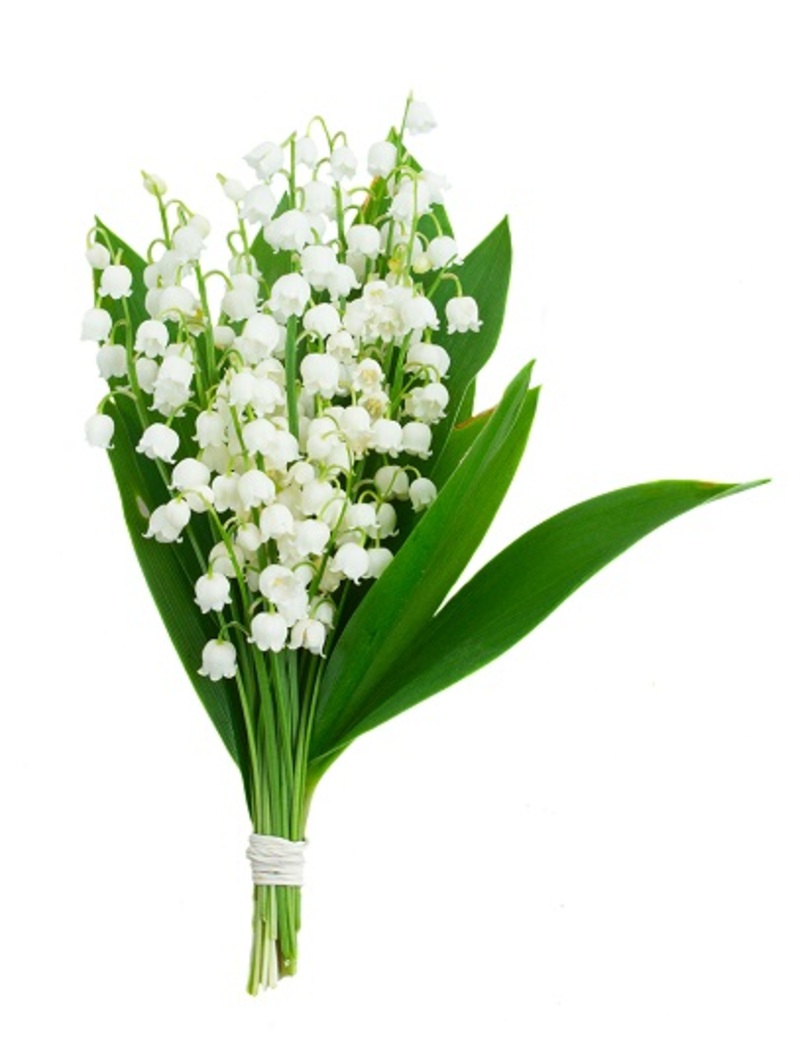The poetic story of birth month flower meanings
Posted on 13/08/2025
The Poetic Story of Birth Month Flower Meanings
For centuries, flowers have whispered their enchanting language to those willing to listen. Each petal, hue, and delicate formation tells a tale drawn from cultural folklore, love, and memory. Among these, the poetic story of birth month flower meanings unfolds a tapestry of symbolism, hidden sentiments, and personality traits associated with every month's unique blossom. Join us as we journey through the charming world of birth flowers, where every month is graciously adorned with its own floral ambassador.

Unveiling the Origins: The Language of Flowers
The tradition of assigning flowers to each month has deep roots in ancient history. From Roman times to the Victorian era's "floriography," flowers were used to express emotions words dared not utter. Birth month flowers, in particular, have long held special significance, believed to provide protection, blessings, and insight to those born under their bloom.
But why do flowers serve as symbols for each birth month? Much like birthstones, monthly flowers were chosen for their seasonal bloom and spiritual associations. Over time, their meanings evolved, creating a rich poetic story filled with love, hope, and unique personal attributes.
January: Carnation and Snowdrop
The Heart of Winter
- Carnation: Courage, Love, and Admiration
- Snowdrop: Hope and New Beginnings
The birth flower for January is the carnation, a blossom known for its frilled petals and enduring charm. In the chilling embrace of winter, carnations stand for unwavering love and affection. Ancient Romans adorned themselves with carnations to honor their gods and their families--an emblem of admiration and devotion.
Snowdrops, meanwhile, are the harbingers of hope, peeking through winter's frost. They symbolize purity and new beginnings, a theme that resonates with the fresh start of every new year.
February: Violet and Primrose
The Promise of Spring
- Violet: Modesty, Fidelity, and Spiritual Wisdom
- Primrose: Young Love
For those born in February, the poetic story of their birth flower is woven with modest charm. Violets, with their delicate purple blooms, represent humility, faithfulness, and spiritual insight. Through history, violets adorned poets' verses for their quiet beauty.
The cheerful primrose, meaning "first rose," speaks of new love and the innocence of youth, echoing the spirit of early spring. Birth month flower meanings for February celebrate the promise of warmer days and a heart full of affection.
March: Daffodil
Spring's Trumpet
- Daffodil: Rebirth, New Beginnings, and Prosperity
The daffodil, also known as narcissus, bursts onto the scene in March, heralding the arrival of spring. Its golden trumpets symbolize renewal and hope, mirroring the world's awakening after a long winter. In the language of flowers, daffodils are given to express encouragement and passion for new endeavors, perfectly suited for those celebrating March birthdays.
April: Daisy and Sweet Pea
Pure Joy and Sweetness
- Daisy: Innocence and Purity
- Sweet Pea: Bliss and Farewells
April's birth flowers are as charming as the month itself. The humble daisy has symbolized innocence and purity since ancient mythology, namely in stories of Roman nymphs. Its unblemished petals and sunny centers evoke simplicity and revitalization.
On the other hand, sweet peas add a scent of nostalgia with their delicate fragrance and pastel shades. They represent blissful pleasure and heartfelt farewells, making April's floral meaning one of gentle warmth and fond memories.
May: Lily of the Valley and Hawthorn
The Essence of Renewal
- Lily of the Valley: Humility, Sweetness, and a Return to Happiness
- Hawthorn: Hope and Supreme Happiness
May's birth flowers weave a truly poetic story. The lily of the valley is treasured for its graceful, bell-shaped blossoms and subtle fragrance. In Victorian tradition, it symbolizes a return to joy and sweetness. Lovers would often gift lilies of the valley to declare their devotion and hope for a joyful future.
Equally significant is the hawthorn flower. Its white clusters carry associations of hope and supreme happiness. Both flowers combine in May to signify the abundance and optimism of late spring--a fitting tribute to those born under this month.
June: Rose and Honeysuckle
The Season of Romance
- Rose: Love, Honor, and Passion
- Honeysuckle: Devotion and Bonds of Love
No flower is as synonymous with poetry and love as the rose. As June's birth month flower, it's the embodiment of emotional intensity and beauty. Each color carries its meaning: red for passion, white for purity, yellow for friendship. The poetic legacy of roses can be seen in literature and art throughout millennia.
The honeysuckle is a lesser-known but equally symbolic flower for June, representing the bonds of affection and lasting devotion. This bountiful month's floral language is undeniably the story of love in its many splendors.
July: Larkspur and Water Lily
Summer's Blossoms
- Larkspur: Lightness and Levity
- Water Lily: Purity of Heart
The bright spikes of larkspur make July's birth flowers vivid and unforgettable. Each shade--from deep indigo to white--tells a different chapter of the poetic story of birth month flower meanings. Larkspur is a symbol of positivity and a carefree spirit.
Meanwhile, the water lily floats serenely on sun-dappled ponds, signifying purity, majesty, and rebirth. July's floral traits include heartfelt openness and emotional depth, mirroring summer's full bloom.
August: Gladiolus and Poppy
Strength and Imagination
- Gladiolus: Strength of Character, Sincerity
- Poppy: Imagination and Remembrance
August's birth flower, the gladiolus, stands tall and proud, an ancient symbol of moral integrity, strength, and honor. Its sword-like leaves echo the meaning of its name, derived from "gladius," the Latin word for sword. Those born under this flower are thought to possess resilience and sincerity.
Poppies, in their vivid reds and subtle whites, have inspired poets and painters alike. They represent not only the power of imagination but also remembrance, making August a month of strong roots and creative flourishing.
September: Aster and Morning Glory
Starry Beauty and Affection
- Aster: Wisdom, Faith, and Valor
- Morning Glory: Affection and Unrequited Love
The aster--named after the Greek word for star--delivers celestial beauty in September. As a symbolic flower, it represents wisdom, faith, and valor. Ancient traditions believed asters warded off evil and promoted love.
Morning glory, as its name suggests, awakens bright and early, symbolizing affection and the fleeting nature of beauty. Together, September's birth flowers invite us to cherish the wisdom of experience and the joy found in each fleeting moment.
October: Marigold and Cosmos
Vibrant and Harmonious Autumn Blooms
- Marigold: Warmth, Creativity, and Passion
- Cosmos: Order, Harmony, and Peace
October's flowers are as vivid as the turning leaves. Marigolds shine with fiery hues, symbolizing passionate creativity, warmth, and the resilience to overcome adversity. The marigold's association with sun and gold brings hope to the autumnal landscape.
Cosmos adds a touch of order and tranquility, representing the beauty in simplicity and balance. October's flower meanings are perfect for inspiring those born amidst the transformation of fall.
November: Chrysanthemum
Cheerful Loyalty
- Chrysanthemum: Joy, Friendship, and Well-Wishes
November's symbolic flower, the chrysanthemum, bursts with color even as the world prepares for winter. In many cultures, including China and Japan, chrysanthemums are associated with longevity, optimism, and deep friendship.
Each petal represents a wish for happiness and prosperity, making chrysanthemums the perfect birth flower for November celebrants known for their loyalty, warmth, and joyful spirit.
December: Narcissus (Paperwhite) and Holly
Renewal and Festivity
- Narcissus (Paperwhite): Hope and Good Fortune
- Holly: Protection and Cheer
December's winter blooms wrap the year in a spirit of hope and resilience. The paperwhite narcissus signifies optimism and healing, often given as a wish for joy in the coming year. Its pristine blossoms evoke peace and reflection during the holiday season.
The holly plant brings festive cheer and is believed to offer protection from harm. In folklore, holly's evergreen leaves ensure luck and safety for those born in December, while its red berries symbolize the warmth of togetherness during the chilliest days.
How Birth Month Flower Meanings Shape Our Stories
The poetic story of birth month flower meanings isn't merely a relic of romantic eras gone by. Today, birth flowers are woven into gift-giving, personal talismans, and milestones. They enliven bouquets, inspire jewelry, and are cherished as meaningful tattoos.
- Personal Significance: Many people feel a deep connection to their birth flower, relating its qualities to their own personalities.
- Gift Giving: A bouquet featuring someone's birth flower makes for a thoughtful and personalized gift.
- Weddings and Celebrations: Couples often incorporate birth flowers into their special days, blending stories and traditions.
Exploring your birth flower can be a voyage of self-discovery, offering insight into the qualities you share with nature's most poetic symbols.

Birth Month Flowers in Art and Culture
The magic of birth month floral meanings has inspired artists, poets, and storytellers throughout time. From the verses of Shakespeare to the intricate designs of Art Nouveau, the blooms associated with each month have left a lasting imprint on human creativity.
- Victorian Poetry: The Victorians championed the secret language of flowers, using it for covert communication of love and sentiments.
- Modern Tattoos: Many choose their birth flower as body art to celebrate their connection to nature and their unique story.
- Fine Art and Jewelry: Symbolic birth flowers have been popular motifs in jewelry and paintings, celebrated for their beauty and depth of meaning.
Conclusion: Embracing the Poetry of Your Birth Flower
Across generations and continents, the poetic story of birth month flower meanings transcends mere tradition. It is a mosaic of legends, personal reflections, and shared human experiences. Whether you are a gentle violet, a resilient chrysanthemum, or a radiant rose, the meaning of your birth month flower offers a unique perspective on your journey through life.
Next time you encounter your birth flower--whether in a blooming garden, a painter's brushstroke, or a heartfelt gift--pause to listen to its poetic whisper. Let the timeless language of flowers remind you of your intrinsic beauty, your strengths, and the far-reaching roots of tradition that connect us all.
What does your birth flower mean to you? Share its story--and your own--with the world as you celebrate another trip around the sun.
Latest Posts
The poetic story of birth month flower meanings
Enchanting Orchids: Expert Care from Pot to Blossom
The Symbolic Spectrum of Peony Flower Colors





